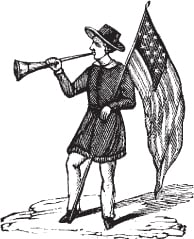
– VOICES OF FREEDOM –
From Bartolomé de Las Casas, History of the Indies (1528)
Las Casas was the Dominican priest who condemned the treatment of Indians in the Spanish empire. His widely disseminated History of the Indies helped to establish the Black Legend of Spanish cruelty.
The Indians [of Hispaniola] were totally deprived of their freedom and were put in the harshest, fiercest, most horrible servitude and captivity which no one who has not seen it can understand. Even beasts enjoy more freedom when they are allowed to graze in the fields. But our Spaniards gave no such opportunity to Indians and truly considered them perpetual slaves, since the Indians had not the free will to dispose of their persons but instead were disposed of according to Spanish greed and cruelty, not as men in captivity but as beasts tied to a rope to prevent free movement. When they were allowed to go home, they often found it deserted and had no other recourse than to go out into the woods to find food and to die. When they fell ill, which was very frequently because they are a delicate people unaccustomed to such work, the Spaniards did not believe them and pitilessly called them lazy dogs and kicked and beat them; and when illness was apparent they sent them home as useless. . . . They would go then, falling into the first stream and dying there in desperation; others would hold on longer but very few ever made it home. I sometimes came upon dead bodies on my way, and upon others who were gasping and moaning in their death agony, repeating “Hungry, hungry.” And this was the freedom, the good treatment and the Christianity the Indians received.
This original happy frame of government is truly and properly called an Englishman’s liberty, a privilege not to [be] exempt from the law, but to be freed in person and estate, from arbitrary violence and oppression.
From “Declaration of Josephe” (December 19, 1681)
Josephe was a Spanish-speaking Indian questioned by a royal attorney in Mexico City investigating the Pueblo Revolt. The revolt of the Indian population, in 1680, temporarily drove Spanish settlers from present-day New Mexico.
Asked what causes or motives the said Indian rebels had for renouncing the law of God and obedience to his Majesty, and for committing so many of crimes, [he answered] the causes they have were alleged ill treatment and injuries received from [Spanish authorities], because they beat them, took away what they had, and made them work without pay. Thus he replies.
Asked if he has learned if it has come to his notice during the time that he has been here the reason why the apostates burned the images, churches, and things pertaining to divine worship, making a mockery and a trophy of them, killing the priests and doing the other things they did, he said that he knows and had heard it generally stated that while they were besieging the villa the rebellious traitors burned the church and shouted in loud voices, “Now the God of the Spaniards, who was their father, is dead, and Santa Maria, who was their mother, and the saints, who were pieces of rotten wood,” saying that only their own god lived. Thus they ordered all the temples and images, crosses and rosaries burned, and their function being over, they all went to bathe in the rivers, saying that they thereby washed away the water of baptism. For their churches, they placed on the four sides and in the center of the plaza some small circular enclosures of stone where they went to offer flour, feathers, and the seed of maguey [a local plant], maize, and tobacco, and performed other superstitious rites, giving the children to understand that they must all do this in the future. The captains and the chiefs ordered that the names of Jesus and Mary should nowhere be uttered. . . . He has seen many houses of idolatry which they have built, dancing the dance of the cachina [part of a traditional Indian religious ceremony], which this declarant has also danced. Thus he replies to the question.
| Questions |
|---|
| 1. Why does Las Casas, after describing the ill treatment of Indians, write, “And this was the freedom, the good treatment and the Christianity the Indians received”? 2. What role did religion play in the Pueblo Revolt? 3. What ideas of freedom are apparent in the two documents? |